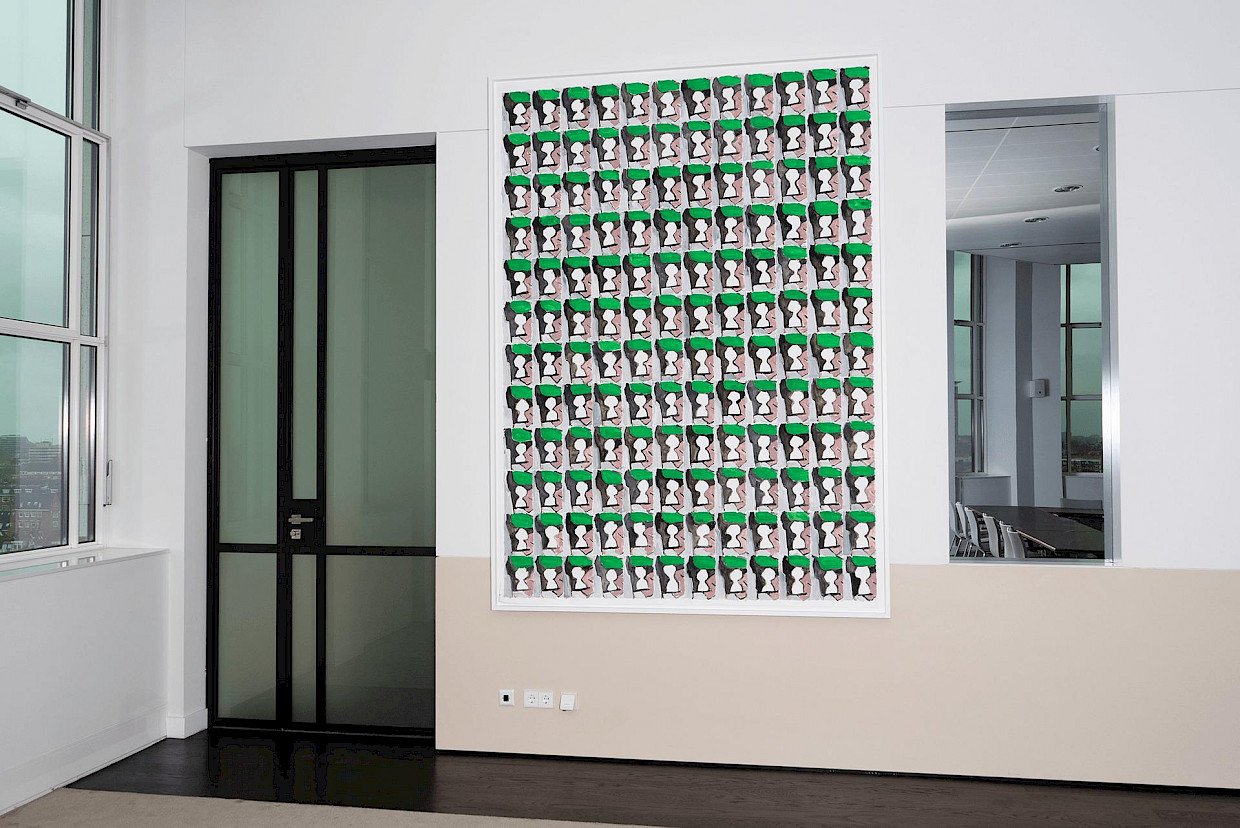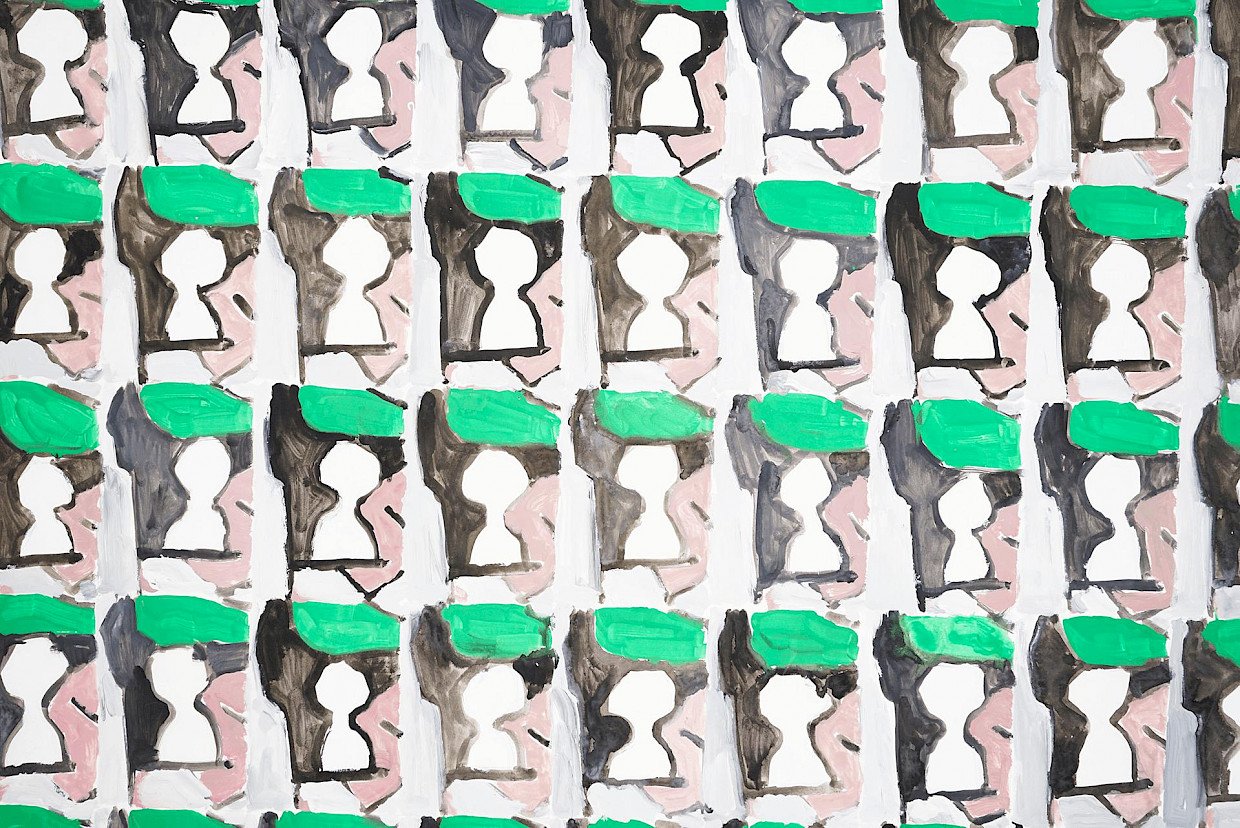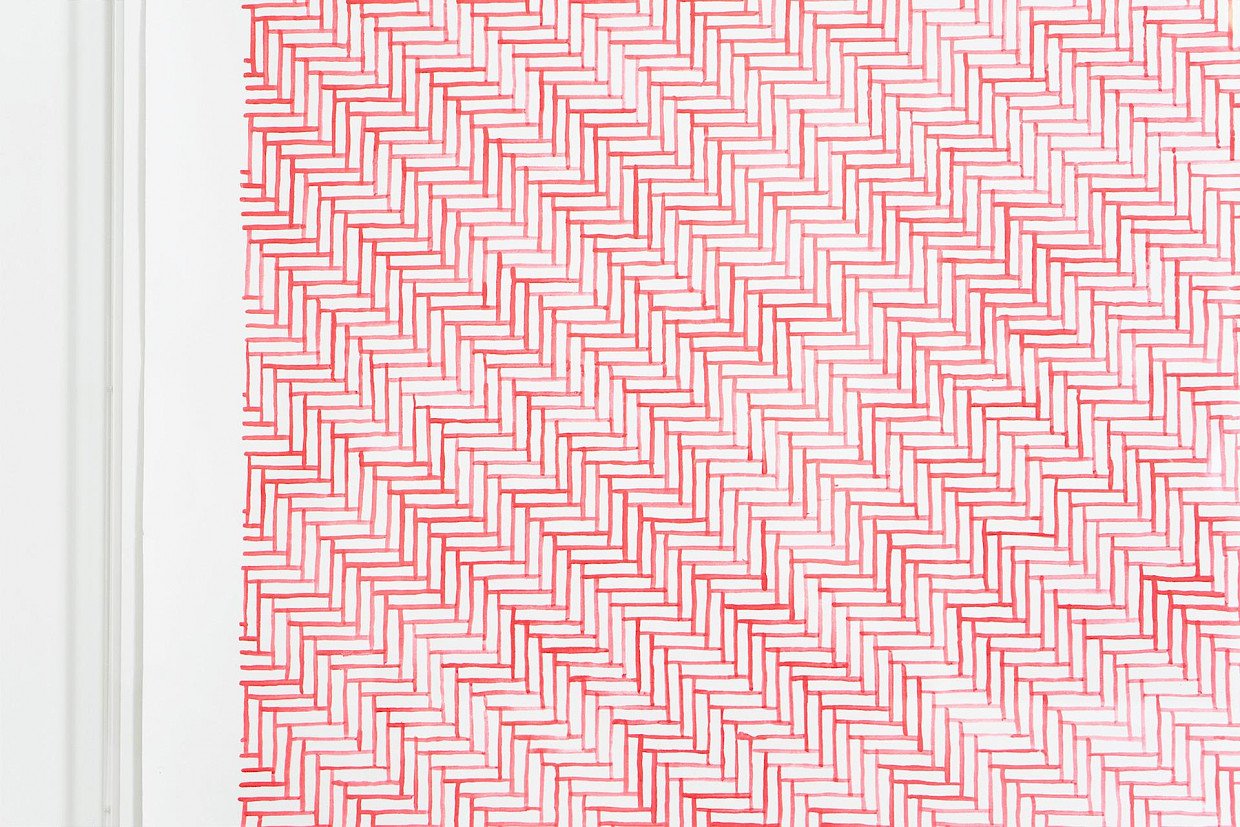

Marijn van Kreij (b. 1978)
Untitled (Tags: Picasso, Reclining Nude in an Interior, 1961, Only a Pawn in their Game, Through the Keyhole, Fien’s Hourglass)

It is not without reason that Martin van Kreij’s work, alongside that of older-generation artist Daan van Golden, was exhibited at museum De Hallen in Haarlem. Born in 1978, Van Kreij is indebted in several ways to the working method of his senior colleague. Van Golden was one of the few real Pop Art-artists active in the Netherlands in the 1960s and his work shows some typical characteristics of this art movement, which became popular thanks to Andy Warhol: the frequent application of photographic and other reproduction methods and the use of (industrial) decorative patterns, repetitions and enlargements. Above all, he is known for his original use of patterns taken from the work of other artists. With his idiosyncratic visual language, in which abstraction, figuration and decoration occur simultaneously and equally, Van Golden has influenced a large number of young Dutch artists.
Since his art school years, Van Kreij has been researching the origin of images and how images relate to one another. Well-known are Van Kreij’s so-called double drawings, one of which is created by mindlessly putting scribbles and spots on paper and the other one by deliberately making a copy of them, as accurately as possible. In doing so, not only does he examine contradictions such as intuition and reason, but also factors such as authenticity and authorship, and their status. With the help of a projector, he draws several pictures on top of each other, resulting in a chaotic tangle of lines in which the images can no longer or hardly be distinguished from one another. In short, the fundamental questions underlying these types of works are: when does a drawing still represent an object and at what point does figuration dissolve into abstraction?
The principle of appropriation, for which Van Golden is known, was applied by Van Kreij in this great work he named Untitled. The starting point is a detail from a late painting by Picasso, one that Van Kreij copied no less than 144 times right next to each other. Yet each repetition is completely unique. Within that repetitive production process, not only is he interested in the differences and imperfections that occur in the making, but also and especially in how that one fragment of an image influences the other.
Order, repetition and seriality appeal to our sense of beauty, in one way or another. How far can you push this principle? Up until what point will that still produce a good and interesting picture? Van Kreij seeks out those boundaries in his work. If one thing becomes clear from this painting, it is that “borrowing art” does pay off.

Marijn van Kreij (b. 1978)
Untitled (Private & Confidential)

In this work, we look at a so-called security pattern, regularly found on the inside of an envelope. The patterns are meant to prevent one from reading what’s inside the envelope. Van Kreij developed a fascination for these patterns at an early age. From 2004 onwards, we begin to see his first works of art based on security patterns. Since then he has made works based on the patterns of various business envelopes, each with its own, unique structure. There are gouaches and drawings with titles such as Banque Populaire du Sud, European Central Bank, Interpolis, Best Western Hotel, Budapest, etc.
Van Kreij’s field of interest encompasses the topic of (the appearance of) confidentiality. The exact boundaries of privacy and confidentiality vary depending on culture and individual. After all, information can be used as a means of exchange and confidentiality can be set aside for a higher purpose, personal gain or because the receiver of the information considers confidentiality less essential than the provider of the information. There are entire forums on the internet about how to deal with the words “Private and Confidential” within a company. Apparently, the boundaries are not crystal clear for everyone and that makes it an interesting topic for Van Kreij.
He also has a fascination for the beauty and rhythm of graphic design. Repetition, copying and rhythm play a major role in Van Kreij’s oeuvre. The artist endlessly works on improving his copying skills, practising the reproduction of one identical image by heart. For example, between 2006 and 2008 he made countless drawings based on a famous photo by the band Nirvana, with lead singer Kurt Cobain lying wide-legged over a drum kit. The small works of art all look very similar but differ subtly from each other due to this method. This also applies to the envelope patterns. These are never rigid “one-to-one” copies of the original, but deliberately feature beautiful – often marginal – irregularities that keep the drawings exciting.
